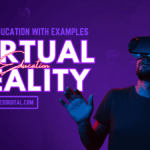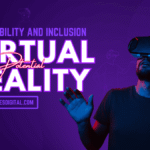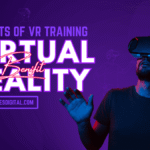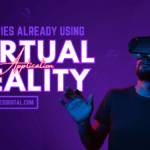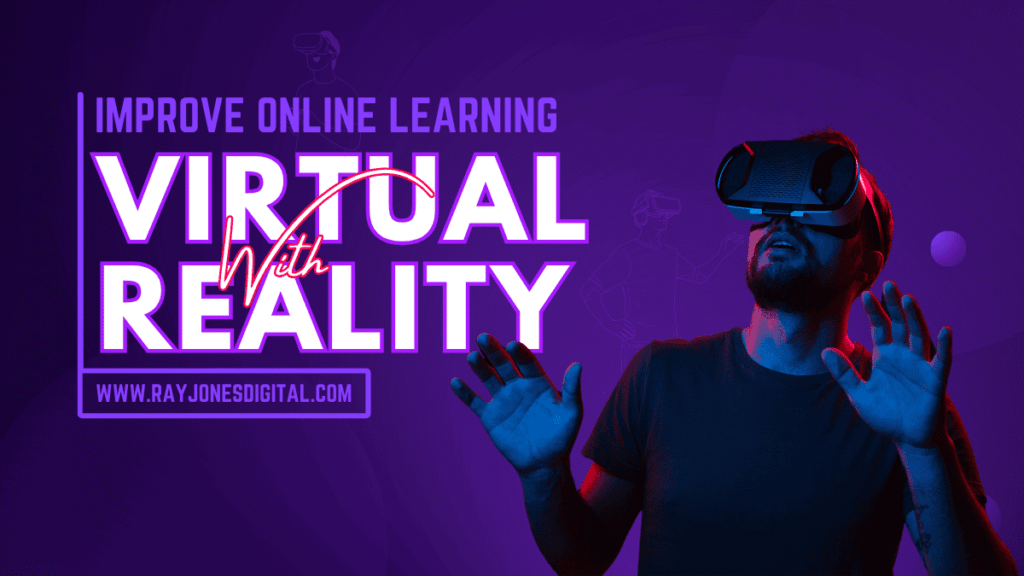
The digital classroom has evolved dramatically over the past decade, but virtual reality represents the next quantum leap in educational technology. As online learning continues to expand globally, VR offers solutions to longstanding challenges that have limited the effectiveness of remote education.
Traditional online learning often struggles with student engagement, practical skill development, and creating memorable experiences. Students frequently report feeling disconnected from their coursework and classmates when learning through conventional digital platforms. Virtual reality addresses these limitations by creating immersive, interactive environments that transform how we acquire knowledge and develop skills.
This comprehensive exploration examines how VR technology is reshaping online education, from enhanced engagement mechanisms to practical applications across diverse learning contexts. We’ll explore the specific advantages VR brings to digital learning, real-world implementations, and the future possibilities for this transformative technology.
The Current State of Online Learning
Online education has experienced unprecedented growth, particularly following global shifts towards remote learning. However, several persistent challenges have limited its effectiveness compared to traditional classroom experiences.
Student engagement remains a significant concern in digital learning environments. Research indicates that attention spans during online lectures are considerably shorter than in-person sessions. Students often multitask, check social media, or simply tune out during video-based lessons. The passive nature of watching screens creates a disconnect between learners and educational content.
Practical skill development presents another major obstacle. Subjects requiring hands-on experience, laboratory work, or physical manipulation become extremely difficult to teach effectively through traditional online methods. Medical students can’t examine patients, engineering students can’t work with machinery, and art students struggle without physical materials.
Social interaction and collaborative learning suffer significantly in conventional online environments. The informal conversations, group work dynamics, and peer-to-peer learning that naturally occur in physical classrooms are difficult to replicate through video conferencing and discussion boards.
Creating Immersive Learning Environments
Virtual reality transforms online education by creating three-dimensional, interactive spaces that engage multiple senses simultaneously. Instead of watching a flat screen, students enter virtual environments where they can move, interact, and manipulate objects naturally.
These immersive environments can replicate real-world locations that would be impossible or impractical to visit physically. Students can explore ancient Rome, walk through the human cardiovascular system, or conduct chemistry experiments in perfectly safe virtual laboratories. This access to otherwise impossible experiences dramatically expands educational possibilities.
The sense of presence that VR creates helps maintain student attention and engagement. When learners feel physically present in a virtual space, they’re less likely to become distracted by external factors. The immersive nature of VR naturally focuses attention on the educational content and activities.
Environmental customisation allows educators to create optimal learning conditions for different subjects and learning styles. A history lesson might take place in a meticulously recreated historical setting, while a physics class could occur in a space where abstract concepts become visible and manipulable.
Enhancing Student Engagement Through Interactivity
Virtual reality transforms passive learning into active participation through interactive elements that respond to student actions. Rather than simply watching demonstrations, students can perform experiments, manipulate objects, and explore concepts through direct interaction.
Gamification elements integrated into VR learning environments increase motivation and engagement. Students can earn rewards, complete challenges, and progress through levels whilst learning academic content. This approach leverages the engaging aspects of gaming to make education more compelling.
The novelty factor of VR technology naturally increases student interest and participation. Many learners who struggle with traditional online formats find VR environments more stimulating and easier to engage with. This increased engagement often translates to improved learning outcomes and retention rates.
Multimodal learning experiences in VR engage different learning styles simultaneously. Visual learners benefit from three-dimensional graphics, auditory learners from spatial audio, and kinaesthetic learners from hand tracking and gesture recognition. This comprehensive approach accommodates diverse learning preferences within a single platform.
Practical Skill Development in Virtual Environments
VR excels at providing hands-on learning experiences that are difficult or impossible to deliver through traditional online methods. Students can practice complex procedures, operate expensive equipment, and work with dangerous materials in completely safe virtual environments.
Medical education benefits tremendously from VR applications. Students can perform virtual surgeries, examine three-dimensional anatomical models, and practice diagnostic procedures without risk to patients. These experiences provide valuable practice opportunities that bridge the gap between theoretical knowledge and practical application.
Engineering and technical subjects utilise VR for equipment operation training, design visualisation, and system troubleshooting. Students can work with virtual machinery, construct 3D models, and test engineering concepts without requiring expensive physical equipment or laboratory facilities.
Scientific education transforms through virtual laboratories where students can conduct experiments, observe phenomena, and explore concepts that would be dangerous, expensive, or impossible in real laboratories. Chemistry students can work with hazardous materials, physics students can observe subatomic particles, and biology students can manipulate genetic sequences.
Collaborative Learning in Virtual Spaces
VR platforms enable sophisticated collaborative learning experiences that surpass what’s possible in traditional online environments. Students can work together in shared virtual spaces, regardless of their physical locations around the world.
Avatar-based interaction creates a sense of social presence that’s lacking in video conferencing. Students can see and interact with virtual representations of their classmates, enabling non-verbal communication and natural group dynamics. This social element is crucial for effective collaborative learning.
Shared virtual workspaces allow students to collaborate on projects, solve problems together, and learn from each other’s approaches. These environments can be customised for specific tasks, whether it’s archaeological site exploration, architectural design, or historical recreation.
Group activities in VR can include virtual field trips, collaborative experiments, and team-based problem-solving scenarios. These experiences create shared memories and learning moments that enhance the social aspects of education whilst maintaining the flexibility of online learning.
Accessibility and Inclusive Learning
Virtual reality can make education more accessible to students with various physical limitations or learning differences. VR environments can be adapted to accommodate different abilities and provide alternative ways to interact with educational content.
Students with mobility limitations can explore virtual environments and participate in activities that might be physically challenging in real-world settings. A student who cannot visit a museum can take detailed virtual tours, whilst someone unable to participate in field work can explore virtual archaeological sites.
Language learning benefits significantly from VR immersion. Students can practice conversations with virtual native speakers, explore foreign countries, and experience cultural contexts that enhance language acquisition. This immersive approach accelerates language learning compared to traditional methods.
Customisable learning environments allow educators to adapt VR experiences for students with different learning needs. Visual elements can be adjusted for students with visual impairments, audio can be modified for hearing differences, and interaction methods can be tailored for various motor abilities.
Real-World Applications and Success Stories
Educational institutions worldwide are implementing VR technology with impressive results. Stanford University’s Virtual Human Interaction Lab has demonstrated significant improvements in student engagement and learning outcomes across various subjects.
Medical schools are reporting enhanced student performance after implementing VR training programmes. Students who practice procedures in virtual environments show improved confidence and competence when transitioning to real-world clinical situations.
Corporate training programmes utilise VR for employee development with measurable improvements in skill acquisition and retention. Companies report faster training completion times and better knowledge retention compared to traditional e-learning methods.
K-12 education is seeing positive impacts from VR implementation, particularly in science and history subjects. Students demonstrate increased interest, improved test scores, and better long-term retention of concepts learned through VR experiences.
Overcoming Technical and Practical Challenges
Despite its potential, VR in education faces several implementation challenges that educators and institutions must address. Technical requirements, cost considerations, and content development represent significant barriers to widespread adoption.
Hardware costs and technical requirements can be substantial, particularly for institutions with limited budgets. VR headsets, powerful computers, and software licenses represent significant investments that may not be feasible for all educational settings.
Content development requires specialised skills and resources that many educational institutions lack. Creating high-quality VR learning experiences demands expertise in 3D design, programming, and educational technology that goes beyond traditional curriculum development.
Technical support and maintenance of VR systems require ongoing resources and expertise. Institutions must invest in training staff, maintaining equipment, and updating software to ensure effective VR programme implementation.
Measuring Learning Outcomes and Effectiveness
Assessing the educational impact of VR requires new approaches to measuring learning outcomes and student progress. Traditional testing methods may not capture the full benefits of immersive learning experiences.
Behavioural analytics in VR environments provide detailed insights into student learning patterns, engagement levels, and skill development. These data can inform personalised learning approaches and identify areas where students need additional support.
Competency-based assessment in VR allows for more practical evaluation of student skills. Rather than relying solely on written tests, educators can observe students performing tasks, solving problems, and demonstrating knowledge in virtual environments.
Long-term retention studies are beginning to show promising results for VR-based learning. Students who learn through VR experiences often demonstrate better recall and application of knowledge compared to those who learn through traditional methods.
Future Developments and Emerging Technologies
Artificial intelligence integration with VR platforms will create more personalised and adaptive learning experiences. AI tutors could provide real-time feedback, adjust difficulty levels, and offer customised instruction based on individual learning patterns.
Haptic feedback technology will enhance the tactile aspects of VR learning, allowing students to feel textures, resistance, and physical properties of virtual objects. This advancement will make VR experiences even more realistic and educationally valuable.
Cloud-based VR platforms will reduce hardware requirements and make VR education more accessible to institutions with limited resources. Students could access high-quality VR experiences through less expensive devices whilst processing occurs in the cloud.
Augmented reality integration will blend virtual elements with real-world environments, creating hybrid learning experiences that combine the benefits of both physical and virtual education.
Implementation Strategies for Educational Institutions
Successful VR implementation requires careful planning and gradual integration into existing curricula. Institutions should start with pilot programmes to test effectiveness and identify challenges before widespread deployment.
Staff training and support are crucial for successful VR adoption. Educators need time to learn new technologies, develop VR-appropriate teaching methods, and create or adapt content for virtual environments.
Partnerships with VR technology companies can provide access to expertise, content, and technical support that institutions might not possess internally. These collaborations can accelerate implementation and improve outcomes.
Budget planning for VR programmes must consider not only initial hardware and software costs but also ongoing maintenance, updates, and content development expenses. Institutions should develop comprehensive financial plans that account for the total cost of ownership.
Student Perspectives and Adaptation
Student feedback on VR learning experiences is generally positive, with many reporting increased engagement, better understanding of complex concepts, and improved retention of information. However, adaptation periods and individual preferences vary significantly.
Some students initially experience discomfort or motion sickness with VR technology, though these issues typically diminish with regular use. Institutions must provide support and alternative options for students who struggle with VR adaptation.
Digital literacy requirements for VR use are generally minimal, as most students adapt quickly to VR interfaces. However, institutions should provide basic training and support to ensure all students can effectively utilise VR learning tools.
Generational differences in VR adoption are becoming less pronounced as the technology becomes more mainstream. Both traditional and non-traditional students are showing enthusiasm for VR learning opportunities.

I am Ray Jones Digital
My current occupations: a Digital Marketer, Local SEO expert, Link Builder, and WordPress SEO specialist. Shopify SEO, Ecommerce Store Management, and HTML & WordPress Developer I have been practicing the above mentioned services for more than 10 years now As an SEO expert working with your ongoing projects.
